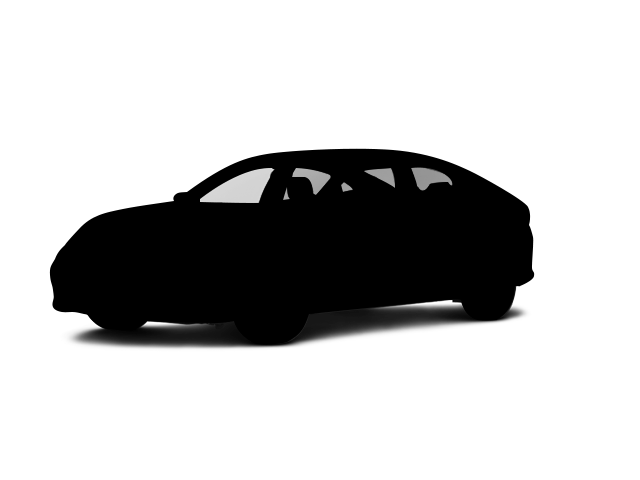Both the Nautilus and Highlander have child safety locks to prevent children from opening the rear doors. The Nautilus has power child safety locks, allowing the driver to activate and deactivate them from the driver's seat and to know when they're engaged. The Highlander’s child locks have to be individually engaged at each rear door with a manual switch. The driver can’t know the status of the locks without opening the doors and checking them.
The Lincoln Nautilus has standard driver and front passenger side knee airbags mounted low on the dashboard. These airbags help prevent the driver and front passenger from sliding under their seatbelts or the main frontal airbags; this keeps them better positioned during a collision for maximum protection. Knee airbags also help keep the legs from striking the dashboard, preventing knee and leg injuries in the case of a serious frontal collision. The Highlander doesn’t offer a front passenger side knee airbag.
To provide maximum traction and stability on all roads, All-Wheel Drive is standard on the Nautilus. But it costs extra on the Highlander.
To help make backing out of a parking space safer, the Nautilus has standard Cross-Traffic Alert with Rear Cross Traffic Braking, systems which detect vehicles approaching from the sides and can automatically apply the brakes to prevent a collision. Only the Highlander Limited/Platinum offers Parking Support Brake.
Both the Nautilus and the Highlander have standard driver and passenger frontal airbags, front side-impact airbags, driver knee airbags, side-impact head airbags, front and rear seatbelt pretensioners, height adjustable front shoulder belts, four-wheel antilock brakes, traction control, electronic stability systems to prevent skidding, crash mitigating brakes, post-collision automatic braking systems, daytime running lights, lane departure warning systems, blind spot warning systems, rearview cameras, rear cross-path warning and driver alert monitors.
The National Highway Traffic Safety Administration does 35 MPH front crash tests on new vehicles. In this test, results indicate that the Lincoln Nautilus is safer than the Toyota Highlander:
|
|
Nautilus |
Highlander |
| OVERALL STARS |
5 Stars |
4 Stars |
|
|
Driver |
|
| STARS |
5 Stars |
4 Stars |
| HIC |
146 |
292 |
| Neck Injury Risk |
29.7% |
38.2% |
| Neck Stress |
317 lbs. |
347 lbs. |
| Neck Compression |
33 lbs. |
55 lbs. |
|
|
Passenger |
|
| STARS |
4 Stars |
4 Stars |
| Chest Compression |
.5 inches |
.6 inches |
| Neck Compression |
37 lbs. |
90 lbs. |
New test not comparable to pre-2011 test results. More stars = Better. Lower test results = Better.
The Insurance Institute for Highway Safety does 40 MPH moderate front offset crash tests on new cars. In this updated test, results indicate that the Nautilus is much safer than the Highlander:
|
|
Nautilus |
Highlander |
| Overall Evaluation |
GOOD |
MARGINAL |
| Structure |
GOOD |
GOOD |
|
|
Driver Injury Measures |
|
| Head/Neck Rating |
GOOD |
GOOD |
| Chest Rating |
GOOD |
GOOD |
| Thigh/hip Rating |
GOOD |
GOOD |
| Thigh Forces L/R |
157/135 pounds |
270/315 pounds |
| Leg/foot Rating |
GOOD |
GOOD |
| Thigh Forces L/R |
157/135 pounds |
270/315 pounds |
| Restraints |
GOOD |
GOOD |
|
|
Rear Passenger Injury Measures |
|
| Head/Neck Rating |
GOOD |
ACCEPTABLE |
| Chest Rating |
GOOD |
GOOD |
| Thigh Rating |
GOOD |
GOOD |
| Restraints |
GOOD |
MARGINAL |
The National Highway Traffic Safety Administration does side impact tests on new vehicles. In this test, which crashes the vehicle into a flat barrier at 38.5 MPH, results indicate that the Lincoln Nautilus is safer than the Toyota Highlander:
|
|
Nautilus |
Highlander |
|
|
Front Seat |
|
| STARS |
5 Stars |
5 Stars |
| Hip Force |
154 lbs. |
300 lbs. |
New test not comparable to pre-2011 test results. More stars = Better. Lower test results = Better.
The Lincoln Nautilus has achieved the Insurance Institute for Highway Safety’s (IIHS) highest rating of “Top Safety Pick Plus” for the 2025 model year. This distinction is based on its exceptional performance in IIHS’ rigorous battery of safety tests. Specifically, it earned a “Good” rating in the latest, more stringent moderate overlap front crash test, a “Good” result in the updated side impact test, and a “Good” score in the revised pedestrian crash prevention test. The Highlander is not even a standard “Top Safety Pick” for 2025.

